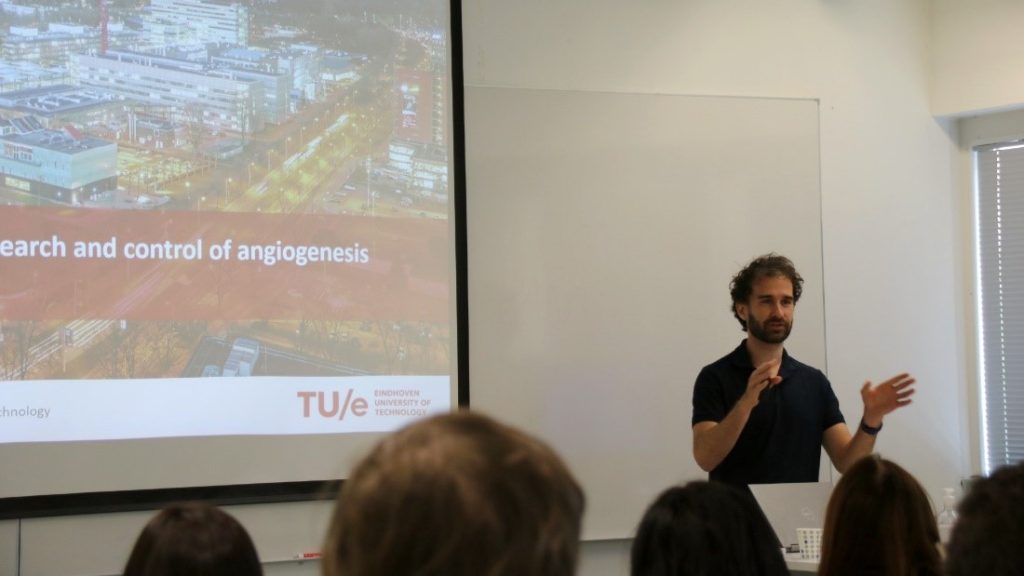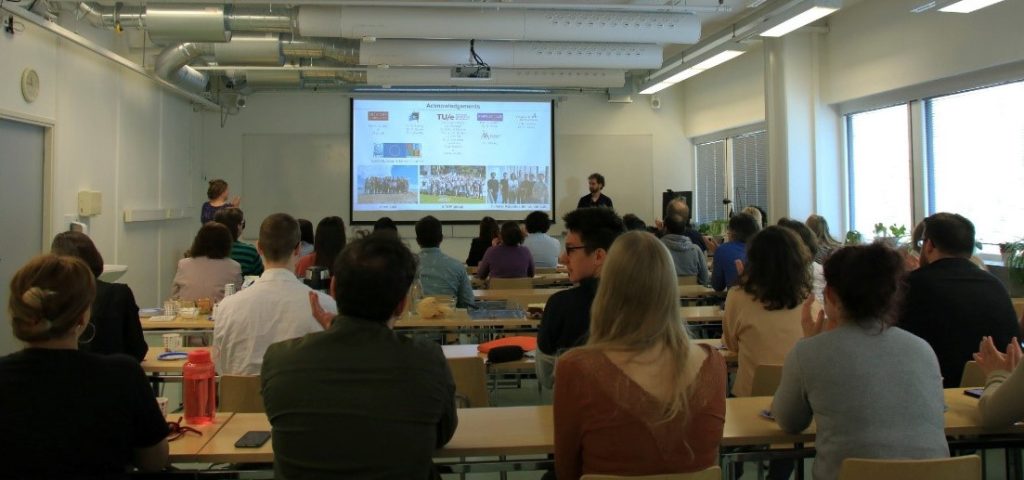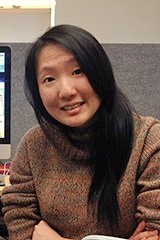Life through a mathematicians’ eye

Computational biology is an emerging approach to modelling biological systems, from molecules to cells to tissues. Not to be confused with bioinformatics, computational biology uses fundamental knowledge from mathematics, and physics to simulate and manipulate complex processes within biology.
The approach relies initially on experimental data but rapidly expands beyond exploratory research at all length scales. The major benefit is that thousands of simulations may be run to guide experimental design; consequently, reducing research costs and the unnecessary use of animal models.
On May 25th, Dr. Tommaso Ristori visited Turku and gave a special InFLAMES and CellMECH guest seminar “Computational modelling guides the research and control of angiogenesis”. The singularity of his background and approach attracted the attention of a multitude of students and scientists, including the Vice Rector for Research of Åbo Akademi, Reko Leino.

Full house at the Auditorium Biologi
Home base in Netherlands
Tommaso Ristori is a Tenure-Track Assistant Professor at the Eindhoven University of Technology, TU/e, Netherlands. Born in Florence, he received a strong foundation in mathematics through a joint MSc degree in Mathematics and Mathematical Engineering from the University of Florence and the Complutense University of Madrid.
Later, he diversified his educational background with a PhD in Biomedical Engineering at TU/e, and a postdoctoral position at Christopher S. Chen laboratory at Boston University (USA). Now, in his current position, he focuses on the computational modelling of angiogenesis for tissue engineering applications.
The ultimate solution?
During the talk, Tommaso showed how computational modelling can be coupled to experimental research to unravel the signalling pathways behind angiogenesis. In his opinion, this is the best way he can understand interactions at the cellular level. When asked about the future of in silico models, Tommaso is certain that a merger between hypothesis-driven and data-driven research will be the ultimate solution.
Should we then change students for computers, asked the audience. In this regard, Tommaso believes that interdisciplinarity is the future, and both experimental and computational research will be needed.
To end his visit on a high note, Tommaso arranged a workshop for the next generation of cell fate scientists on the basics of modelling signalling pathways with MatLab. Plenty of exciting ideas and questions were exchanged in this encounter, and overall, a different perspective of life science was shown in an otherwise familiar environment.


